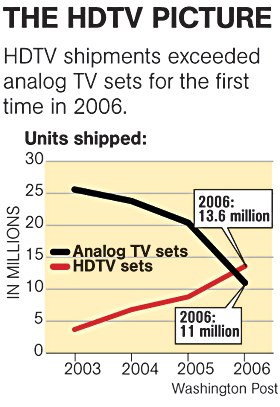Have LCD TV Prices Hit Rock Bottom?
If you've been holding off on that new flat panel LCD television, you may want to get it in gear. The prices of LCD panels have apparently bottomed out, causing manufacturers of 32-inch and under displays to consider raising prices for the first time since the technology was introduced to consumers. Wholesale prices on LCD panels reached their lowest point this year and actually jumped back up a bit, with price increases in April, and a larger $5-10 price increase in May. As the LCD panels make up the most expensive component in a consumer display (often over 50% of the selling price), price increases in the panels themselves make for a particularly significant change in the retail pricing necessary for manufacturers to continue manufacturing displays. Indeed, some manufacturers have recently (and throughout the years) been absorbed or put out of business by very competitive pricing.
This also ultimately means that those consumers looking for these new displays to drop even further may be waiting too long. Just as the careful stock market investor can miss the lowest entry point for a mutual fund, you don't want to wait so long that the prices actually begin to climb back up to 2006 levels.
The display market is a dynamic one, and LCD panel prices are anything but fixed and predictable. In fact, one thing that we do not see taken into account with these recent reports is the ever-increasing amount of factories being developed abroad (many in Korea) which would presumably lower prices of larger screen sizes and overall manufacturing costs. I believe there is still room for manufacturing improvements and certainly any competitive technologies may also play a role in driving prices down further. For that we'll just have to wait and see.
An interesting chart showed up in the Washington Post which showed that in 2006 HDTV shipments in the U.S. exceeded analogue TV sets for the first time. They didn't just exceed it, they topped the number by over 2.6 million units sold. This shows an interesting turn of events and seems to indicate a driving trend that will pull more HD content through demand. Once that happens, the cycle will continue and manufacturing needs may grow, causing greater need for efficiency. Lower prices almost always follow.
It is unheard of for manufacturers to increase prices on existing product lines, however it may certainly be seen once newer models are introduced (with increased pricing likely hidden by new features). In any case, it's not too late - and prices are certain not to jump up too much. But for those sitting on the fence - it's time to get off and go get your display!


